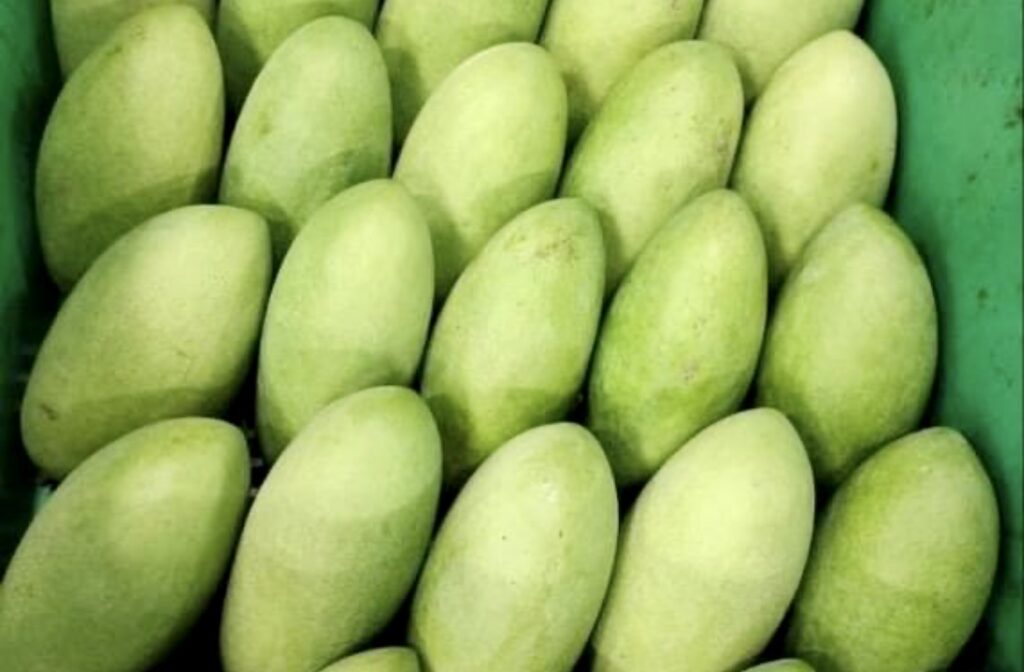By Henrylito D. Tacio
The last time Philippine mangoes were seen in Australia was then years ago. Now, they are available again down under.
A news report released by the Philippine Embassy in Australia stating that “the first batch of fresh Philippine mango shipment” arrived in Sydney and Perth last September 7.
The mangoes exported to Australia were sourced from Bansalan, and nearby municipality of Magsaysay (known in the past as Kialeg and was a barangay of Bansalan). Other mangoes also came from other towns of Davao del Sur, particularly Digos City and Malalag.
“The entry of fresh Philippine mangoes into Australia marks a significant milestone in our bilateral trade,” said H.E. Ma. Hellen B. De La Vega, the country’s ambassador to Australia, in a press statement. “With the elevations of relations to a Strategic Partnership, the Philippines looks forward to building further trade with Australia.”
She added that “the time has come for our Aussie friends to enjoy our much beloved fruit in the Philippines.”
In response, Australian Ambassador to the Philippines H.E. HK Yu said, “I am very pleased that Australians will now be able to enjoy high-quality mangoes from the Philippines! This is an important, and indeed delicious outcome strengthening our two-way trade and agricultural engagement.”
Right now, “only Carabao mangoes have been approved for export to Australia and an increase in volume is yet to be determined after careful analysis of the market since Australia is also a mango producing country,” Roberto Angelo Amores II, Hi-Las President and CEO, was quoted as saying by Agriculture Magazine.
“But we firmly believe that Philippine mango has potential in the Australian market, especially during the off season of Australia’s production,” he added.
When it comes to mango, Philippine mangoes are the number one. In fact, former Agriculture Secretary Leonardo Q. Montemayor said the variety has found its way in the Guinness Book of World Records as “the sweetest of its kind in the world.”
Although mango is the country’s fruit icon, it is not endemic in the Philippines. History records showed that mangoes originated from the Myanmar region, where it was known to have been cultivated 4,000 years ago. Buddhist monks took mango to Malaya and eastern Asia in the 5th century B.C.
Later in the 18th century, Portuguese explorers would introduce mango in Brazil. From there, mango cultivation would reach Florida, United States in 1833 and eventually in Africa and in other lowland tropical and sub-tropical areas. Today, there are about 83 mango-producing countries in the world.
There are several varieties of mango grown in the Philippines. But when people talk about the fruit, they are actually referring to mango carabao. The fruit is elongated and kidney-shaped, weighs about 240 grams, with thin, yellow pulp, very tender taste and slight aroma.
Before 1974, mangoes were available for a short period of time only, specifically during the summer months.
“Despite the superior taste of mangoes, and despite being around six centuries ago, they remained virtually a commercially neglected fruit that raised little revenue,” observed Dr. Ramon C. Barba, the man who invented a way to induce more flowers in mango trees and was named national scientist in 2014. “This lowly status was largely because mango has unreliable fruiting habits.”
In those years, the fruit habits of mangoes were seasonal, biennial, and erratic. Dr. Barba, whose academic background was agronomy and fruit production, reported: “If (mangoes) bear fruit one year, they may not do so the next year. Usually, mango trees bear fruit for only one month in a year. Yield may vary from year to year, from tree to tree in a grove, and even from branch to branch in a tree.”
Thanks to Dr. Barba, mangoes can now be eaten all-year round. Unknowingly, mango tops as the most favorite tropical fruit in the Philippines. This was based on the survey conducted by this author. More than 50% of the 70 respondents interviewed via e-mail and text messaging have chosen mango as the fruit of all seasons.
Dr. Marimel Yap-Veloso, consultant ophthalmologist at the Asian Eye Institute in Makati City, reasons out: “Mango is sweet and satisfying – and it has great texture, too! It’s great on cakes, pies and as a juice or shake. It’s a versatile fruit. The green variety is also delicious with fish and bagoong.”
Lionel Tierra, a Filipino who now lives in California, prefers ripe mango. “It is succulent, sweet and heavenly to the taste,” he wrote. “I’ve tried durian, star apple, and atis, among others – they are all very good to taste, but mango, to me, is still the best. Mango is like my best friend and sweetheart. All other fruits are just good friends and acquaintances.”
Larry Stoffel, an American who is married to a Filipino, confirmed this. “The rich juicy flavored mango from the Philippines is the most fantastic fruit I have ever tasted,” he revealed. “It’s true that we import mangoes from other countries but those imports cannot duplicate the mangoes I have eaten in Bohol. I miss the mangoes and can’t wait until I can have some more when I go back there.”
Now wonder, there is a sure market for mangoes. The Rome-based Food and Agriculture Organization (FAO) of the United Nations said the Philippines accounts for an average of 10% of the world’s fresh and dried mango exports.
Next to banana and pineapple, mango is the third most important fruit crop of the country based on export volume and value. – ###
Photos courtesy of Roberto Angelo Amores II and Department of Agriculture





